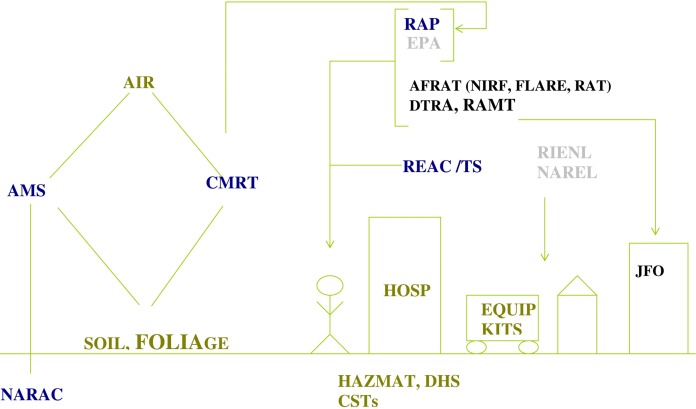FIGURE 3.
Local and national emergency response. The local response (green) includes activation of HAZMAT units and Civil Support Teams (CSTs). It is coordinated by the Department of Homeland Security (DHS). The national response provides resources to conduct radiation measurements on samples of air, soil and foliage. DOE response (dark blue) includes activation of the Aerial Measuring System (AMS), the National Atmospheric Release Advisory Center (NARAC) and the Consequence Management Response Team (CMRT). The Radiological Assistance Program (RAP) and the Radiation Emergency Assistance Center/Training Site (REAC/TS) are deployable DOE resources that may provide personnel to assist in mitigating an event. EPA assets (gray) include two mobile laboratories (the Radiation and Indoor Environment National Laboratory or RIENL, and the National Air and Radiation Environmental Laboratory or NAREL) that provide expertise and equipment for sample preparation. The Department of Defense may elect to engage in the response (black) through activation of its Air Force Radiation Assessment Team (AFRAT), the Defense Threat Reduction Agency (DTRA) and the Radiological Advisory Medical Team (RAMT). It may be elected to also assign a Joint Field Office (JFO) as a point of contact for the DOD.
NIRF: Nuclear Incident Response Force. FLARE: Field Laboratory for Assessment of Radiation Exposure Team. RAT: Radioanalytical Team. HOSP: hospital.

